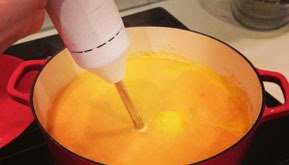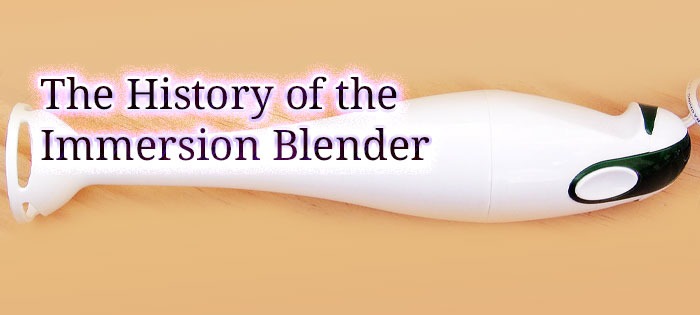For the most knowledgeable foodies and kitchen whizzes, the immersion blender is truly a blessing. It is the “magic wand” in the kitchen – you can take it out from the cupboard any time you need it.
An immersion blender is a hand-held blender-cum-grinder which consists of rotating cutting blades at the end of the shaft. It is also known as the “stick blender,” “wand blender,” “hand blender,” or “hand-held mixer.” The best thing about using the immersion blender is that you don’t need a designated container or jar to throw all your ingredients in. You can immerse it in any container where the food is being prepared – in a glass, in a bowl, or even in a piping hot pot on a stove! You can use it in chopping, grinding, blending, pureeing and emulsifying ingredients.

For fans of the immersion blender, they see it as one of the best blenders around for its portability, ease of use and versatility. If you are thinking of acknowledging the individual(s) behind this amazing kitchen gadget, maybe you want to discover its history as to how and when it was created, as well as who created it.
Most sources cite that the first immersion blender was created in Switzerland in 1950. The person behind its development was Roger Perrinjaquet (born around or before 1935 – died in 2000), who patented his invention on March 6, 1950. He named his invention as “bamix” which was coined from the words bat e mixe (French for “beats and mixes”). He called the immersion blender as the “first bar portable bar mixer in the world.” In 1954, Perrinjaquet sold his patent to a consumer goods company, who later started to produce its own immersion blender models. By the 1960s, the immersion blender had been widely used in restaurants and professional kitchens in Europe.

The immersion blender comes in corded or cordless (battery-run) models. Models for home use usually have an immersible shaft length of approximately 6.3 inches (or 16 centimeters). There are also larger, longer and more heavy-duty commercial models which are mostly used by professional chefs. Celebrity chef Emeril Lagasse and Iron Chef America host Alton Brown have even christened a nickname for the immersion blender: “boat motors.”
The immersion blender is also called “Bermixer,” which is actually a brand name for Dito-Electrolux’s professional models.
Units can come with other accessories such as a cord or a container (when purchasing containers or jars, make sure that they are also BPA-free).
You can thank Roger Perrinjaquet for inventing the immersion blender – it enables quick, easy and fuss-free blending and processing foods! Check out our top rated immersion blenders on our website and read blender reviews and blogs to keep you well-informed in getting the best immersion blenders that you can afford.

